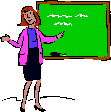Measuring With Non-Standard Units
Learning Context
Purpose
Measurement is an important daily process that is essential for students to learn. The earlier students are aware of the strategies and processes available with measurement; the earlier students will be able to use the strategies of measurement in their real lives. If students are able to connect the idea of measurement with real world experiences and objects, then the students have a personal purpose for learning the material. Additionally, when students are able to make a personal connection to the material that they are learning, it is evident that they are more motivated to learn and more likely to remember the material because it was made into something personal for them.
Learning Objectives
- 1.0 - Students demonstrate their understanding of measurement by manually executing the measurement process for a given fish using color tiles as a non-standard unit of measurement.
- 2.0 - Students physically write their answer and provide a complete sentence for their reasoning.
Enduring Understanding
- Accurate measurement can be done with non-standard units.
Essential Questions
- What strategies are important in order to get an accurate measurement?
Guiding Questions
- What is the most common way to measure objects?
- What are a few popular tools used to measure?
- Where do you begin when you start to measure an object?
- Where do you end the measurement length of an object?
- What is important to remember while measuring to get an accurate measurement?
- How would you get the most precise measurement?
Class Background |
This learning experience was conducted during my student teaching placement at Smallwood Elementary in Amherst. In this general education first grade classroom there were 22 students consisting of 11 boys and 11 girls. While I was working with my cooperating teacher, I used the Classroom Rules and Classroom Procedures which are located in Appendices A and B.
This classroom has four students who get pulled out three times a week for reading intervention services. Additionally, two students are taken out of the classroom for speech therapy daily. One of the students is involved with both reading and speech services.
Overview of What Students Need to Know
Prior to Implementation
- Demonstrate where to begin and end a measurement length
- How to count color tiles
- Recording measurements properly
- Identify strategies to acquire an accurate measurement
During Implementation
- Identify that the fish is longer than (4) four color tiles
- The measurement has to include a (½) half representation
- Identify that the fish is not quite (5) five color tiles long
After Implementation
- 4 color tiles is less that 4 ½ color tiles, but 5 color tiles is more than 4 ½ color tiles.
- The most accurate measurement for the given fish is 4 ½ color tiles.
- The answer to the measurement can be written by labeling the amount of color tiles as well as explaining with a complete sentence.
Classroom Rules
Classroom Rules |
Raise your hand to answer a question.

Follow directions given by the teacher.

Listen quietly while another person is talking.

Clean up your area when you are finished with a task.

Classroom Procedures
Classroom Procedures |
Like the classroom rules, the procedures of a classroom are just as important so students are aware of how they are expected to complete certain tasks throughout the school day.
Behavior for entering the classroom in the morning:
- Enter the room by walking.
- As you pass by the counter, hand in your homework.
- Sign up for lunch of you are buying.
- Begin morning work that is already on your desk.
Leaving the room:
- If you need to go to the bathroom, make a “thumbs-up” symbol in the air and wait for a response from the teacher.
- If you need to get a drink of water, raise your hand and wait to be called on before you leave the room.
- If you need to leave the classroom for any other reason, raise your hand and wait for the teacher to respond.
When a student is absent:
- When a student is absent, they are responsible for completing the work that was missed. The work will be in your mailbox.
Answering a question during a discussion:
- To answer a question you must raise your hand to be called on, unless otherwise suggested.
- You need to wait to be called on so only one person is talking at a time.
Letter home
Parent Letter |
____/____/20__
Dear Parent/Guardian,
This week in our classroom we are beginning a new unit in math. Our new unit will cover the basic strategies of measurement. In addition to the simple basics of measurement, your child will be introduced to the skill of measuring with non-standard units.
Like any unit up to this point in the school year, a unit test is planned in order to assess the skills that have been learned about measurement. A notice will be sent home a week prior to the unit assessment to let you know.
If there are any questions please feel free to email or call me.
Phone:
Email:
Thank you,
Ms. Amanda Siuda
Classroom Teacher